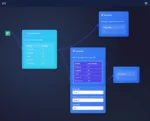In the fast-evolving landscape of real-time data, managing unpredictable event rates is more than just a technical feat—it’s a strategic advantage. At Dev3lop, we help companies leverage adaptive autoscaling to meet volatile demands, optimize costs, and drive resilience in analytics platforms. Autoscaling isn’t simply a matter of adding nodes automatically; rather, it’s about dynamically aligning resources with variable workloads, unlocking unprecedented scalability and operational efficiency. If you have encountered bottlenecks or mounting costs as your data volumes fluctuate, it’s time to advance beyond reactive hardware expansion and adopt a smarter, data-driven approach.
The Imperative: High Variability in Modern Event Streams
Today’s applications—from e-commerce tracking to IoT telemetry—rarely see steady, predictable data flows. Instead, events like sales surges, marketing campaigns, or sensor bursts can cause unexpected spikes. Traditional fixed-resource architectures are easily overwhelmed by such variability (leading to outages), or they remain overprovisioned during low-use periods (wasting spend). That’s why adaptive autoscaling has become essential in modern architectures: it offers nuanced scaling, instantly responding to real-time demands. Drawing inspiration from proven Node.js consulting services and contemporary data pipelines, adaptive autoscaling makes sure infrastructure mirrors the highly variable nature of the business itself—delivering both performance and value, every minute.
How Adaptive Autoscaling Works in Practice
The fundamental challenge—and opportunity—lies in detecting when to scale and by how much. Modern autoscaling solutions use fine-grained telemetry from queues, brokers, or custom event monitors to analyze not just volume, but also rate-of-change, event complexity, and system health. Key approaches such as predictive analytics or rule-based triggers can automatically orchestrate the provisioning of instances or containers, shaping your infrastructure with intelligence instead of blunt force. Critically, this flexibility can be applied to both compute and storage layers, especially when harnessing high-performance data techniques like memory-mapped file benchmarks for large datasets or implementing simplified SQL workloads to limit database pressure. The technical result? Higher reliability—and lower operational risk—without overpaying.
Architectural Strategies That Empower Autoscaling
Implementing adaptive autoscaling is not just a plug-and-play checkbox; it requires architectural alignment across your stack. For example, event-driven frameworks, decoupled microservices, and stateless service design allow workloads to be spread more evenly and scaled independently as needed. Innovations in bidirectional data synchronization and temporal data governance make it possible to maintain data fidelity and regulatory compliance even as instances come and go. Visualization and monitoring also play a pivotal role—transparent, real-time dashboards built with preattentive dashboard design or a keen focus on visualization ethics help decision-makers assess scaling effects at a glance. This architectural thinking ensures autoscaling is not an afterthought, but a core enabler of business agility.
Driving Innovation with Adaptive Scaling
Forward-thinking organizations aren’t just keeping up—they’re leveraging adaptive autoscaling to explore entirely new territories in analytics. By marrying flexible compute strategy with world-class visualization, as exemplified by self-driving car data analytics or deep learning architecture visualization, teams are accelerating time-to-insight while keeping infrastructure nimble. It opens the door to more creative data storytelling through the art of storying telling through data visualization and infuses scalable systems with both color harmony and intelligence, guided by color harmony, theory, and applied palette usage. Ultimately, autoscaling isn’t just for peak-load insurance—it’s a catalyst for innovation in a world where event rates are unpredictable by definition. For organizations ready to seize this advantage, now is the time to reimagine your data infrastructure for true, adaptive scale.
Thank you for your support, follow DEV3LOPCOM, LLC on LinkedIn and YouTube.

























